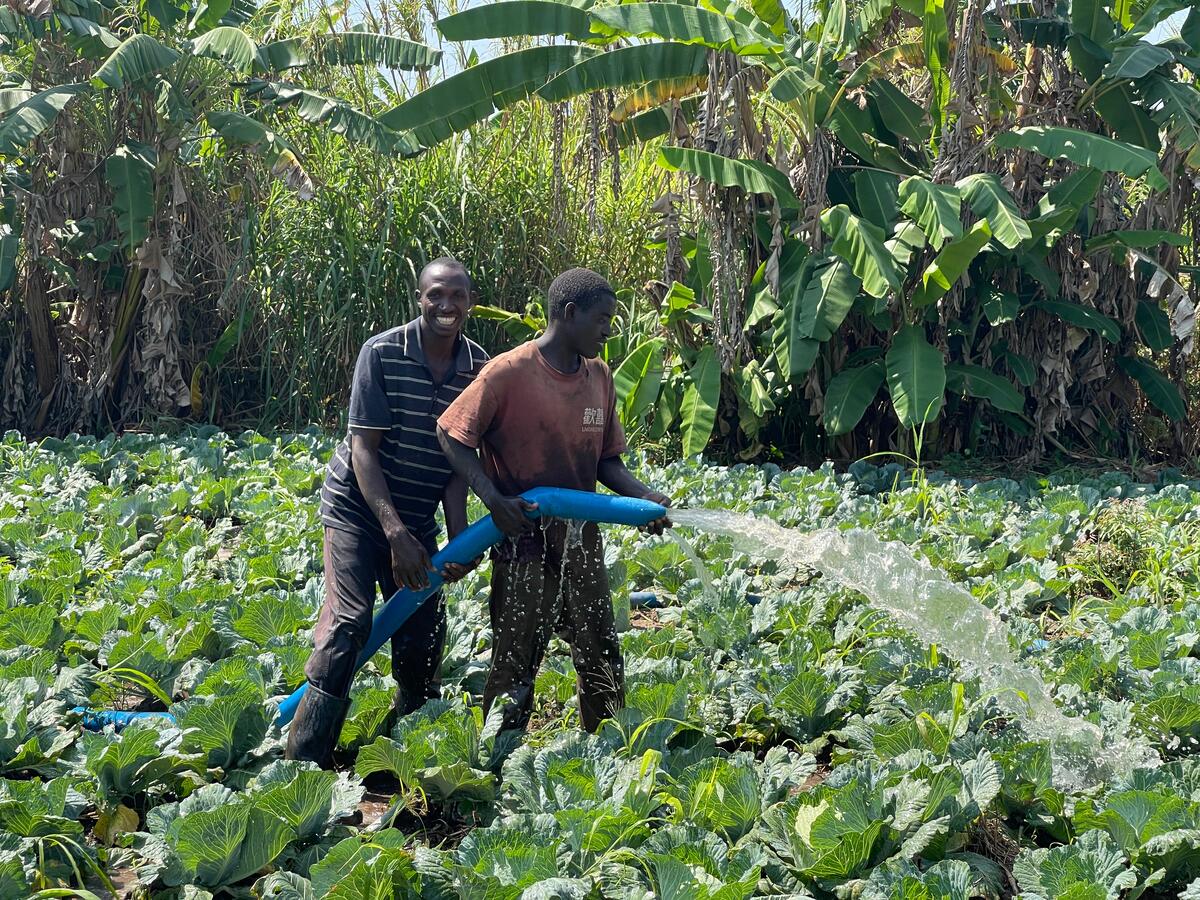Refugee artists mark festive season with colorful exhibitions

Refugee artists mark festive season with colorful exhibitions
Lilian Jamwaka smiles warmly at passersby as they stroll by her stand, where she has neatly arranged an array of products on a table. The shiny beads, colourful fabrics and silky scarves easily attract potential customers and in a span of ten minutes, she sells two items.
“I’m glad to be here because I can exhibit what I have made,” she says. “It’s my second time to exhibit and I’m eager to see what I can sell.”
The Ugandan artist lives in Nairobi and is among 50 refugees who showed their work at a Christmas fair co-organized by UNHCR, the UN Refugee Agency, and the Danish Refugee Council (DRC). The event is one of three exhibitions held to mark the festive season and more importantly, provide a platform for refugees in Kenya to make a living.
“I’m glad to be here because I can exhibit what I have made.”
“We support the livelihoods and self-reliance of refugees and this is one of the many ways we do that,” explains Midori Honda, UNHCR’s Livelihoods Officer in Nairobi.
She adds that a number of exhibitions are held every year around the festive season in partnership with other UN agencies and NGOs to help refugees have access to a wider market.
“Frequent exposure to local markets helps refugees learn market trends, meet customers and hopefully, sell more,” she explains.
In addition to organizing these exhibitions, UNHCR works with various agencies like the Jesuit Refugee Service (JRS) and RefuSHE, a local enterprise that trains artists, to market refugees’ products and find locations in commercial areas for their wares to be sold.
Alpha Mukangala, from the Democratic Republic of Congo (DRC), lives in Kakuma camp and has benefitted from such events. The Congolese artist’s love for art began nearly a decade ago and he has improved his skill through practice, UNHCR-facilitated trainings and mentorship programmes.
As he exhibits at the Christmas fair, he reflects on how the exposure to outside markets has helped him grow.
“As refugees, we often struggle to gain access to markets outside of the camps,” he says. “But through such opportunities, we can meet other artists, potential customers and be able to network.”
“Through such opportunities, we can meet other artists, potential customers and network.”
In Kampala, a similar exhibition has also brought together refugee artists from the six refugee settlements in Uganda. First organized in 2017, the second edition of the Christmas market has seen more refugees participate, exhibiting diverse products ranging from leather products, wood carvings and baked sweets.
Joyce Mbithi, UNHCR’s Senior External Relations Officer in Kampala explains that the market is helping refugees have access to a wider market.
“It is to the refugees’ advantage to be exposed to these markets as they have an opportunity to sell their products,” she says.
Congolese refugee, Kasereka Positif, grew up watching his father make leather products back home in the DRC. Now living in Rwamwanja refugee settlement, the 29-year-old has taken up the skill. His stand at the exhibition is filled with various leather products.
“I chose to do leather as a way of earning a living,” he says, as he polishes a leather belt. “Its the best skill I came with from the DRC.”
A few stands ahead, South-Sudanese baker, Mbikoyezu Daniel Baptist has arranged baked goods on his table. He started baking when he arrived in Kiryandogo refugee settlement in 2017.
“I started my bakery when I saw women in the settlement trying to make bread in sauce pans using charcoal which is expensive,” he explains.“Today I not only have a bakery but a skills development centre for the refugees and local community.”
UNHCR’s Honda explains that another key initiative to help refugee artists’ become self-reliant is strategic partnerships and refugee-centered initiatives like Made 51 that connect refugees to global markets.
“We assist with access and marketing and this is part of our strategy to help them.”
“While refugee artists have the skill and know how to make products, they don’t often know how to market themselves,” she says. “We assist with access and marketing and this is part of our strategy to help them.”
Lilian took part in a 10-day training with Made 51 and can already see the difference it has made in her work. Her avid interest in recycling is channeled through her craft.
“Before the training, I used to use common beads but now I have moved to something more exotic,” she says, adding that she is now recycling glass, cow horns and bones.
“My most beautiful beadwork is made out of recycled products and this makes them more ecofriendly,” she adds.
As another customer stops at Lilian’s stand in Nairobi, she proudly holds up a glistening necklace. It looks like she is about to make yet another sale.
Additional reporting by Yonna Tukundane in Kampala, Uganda








